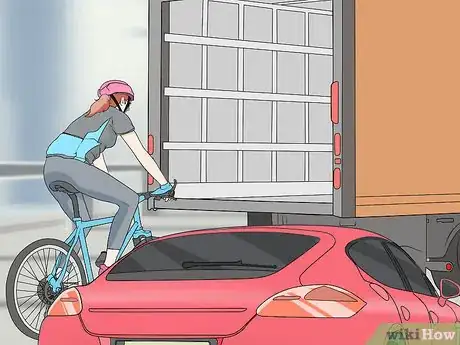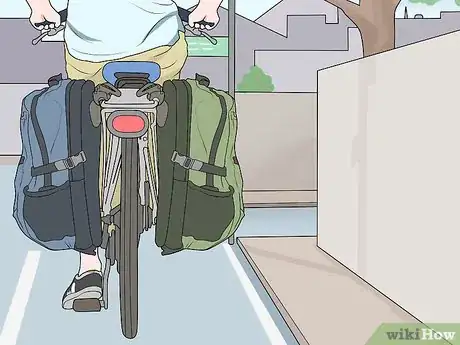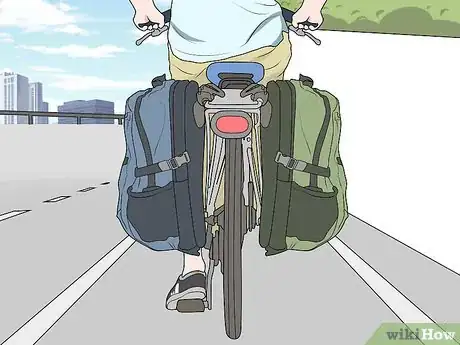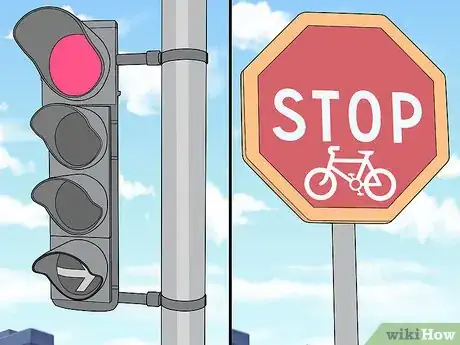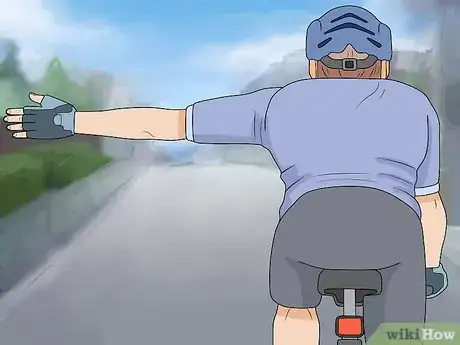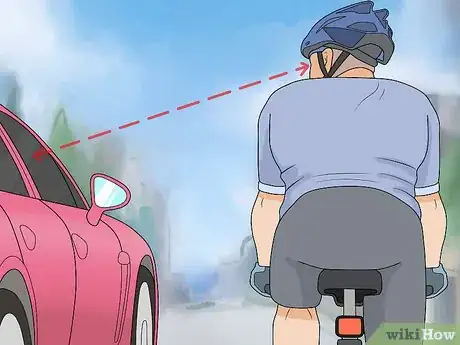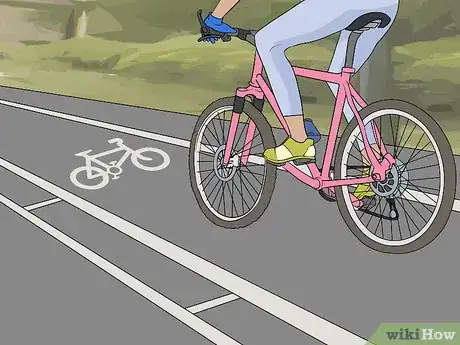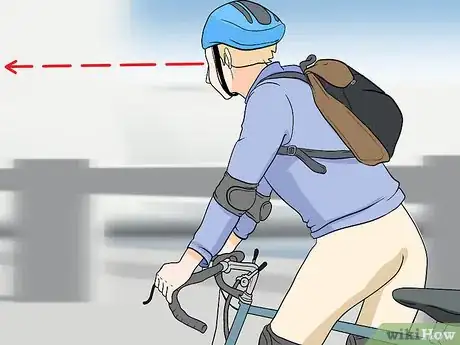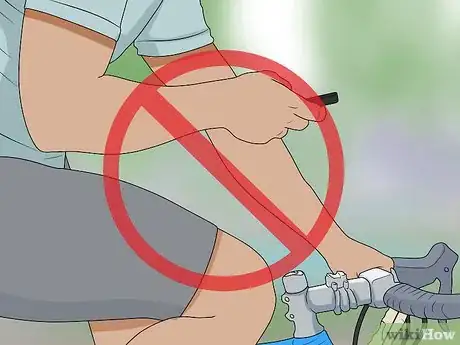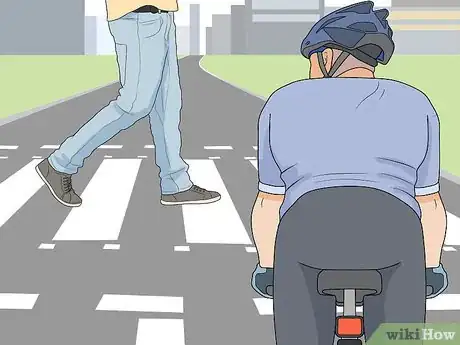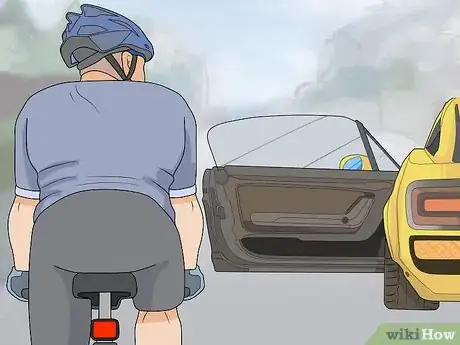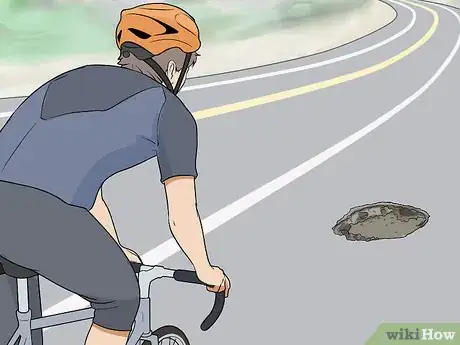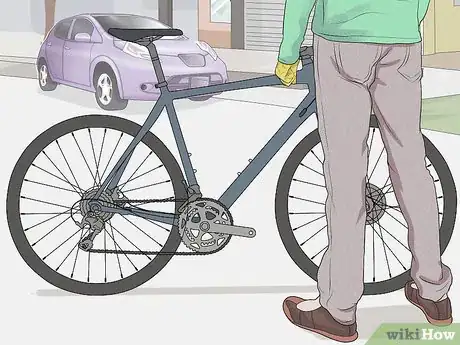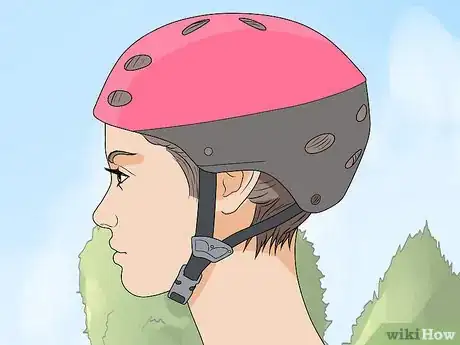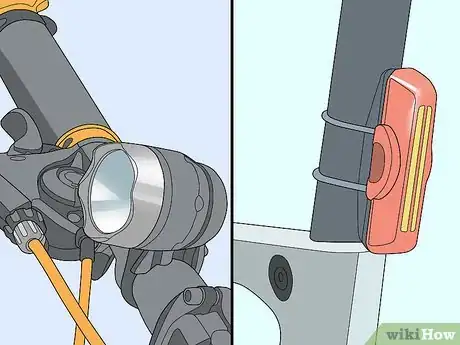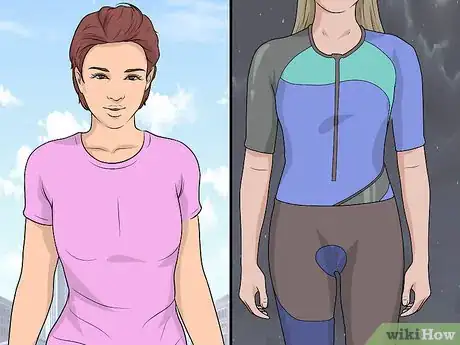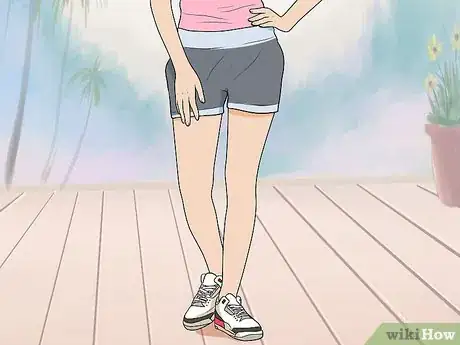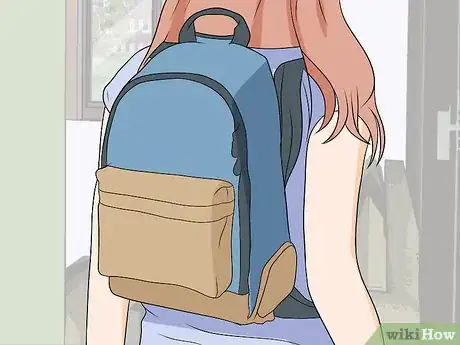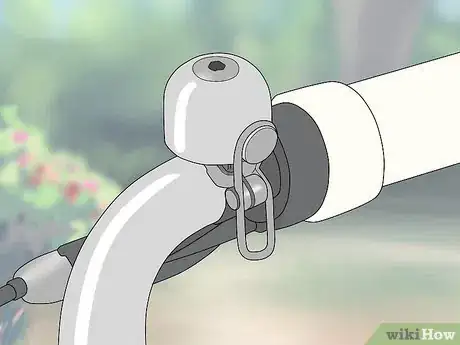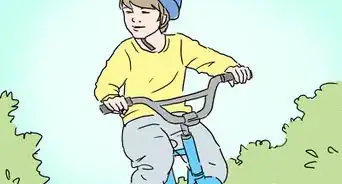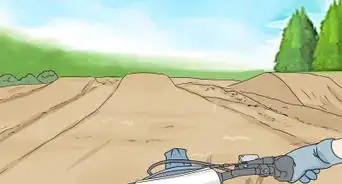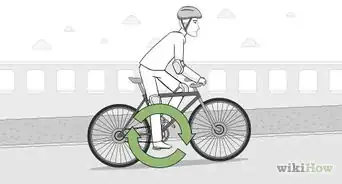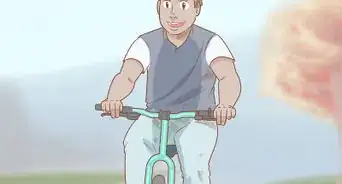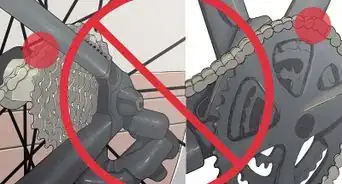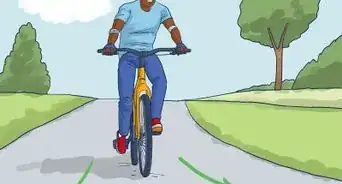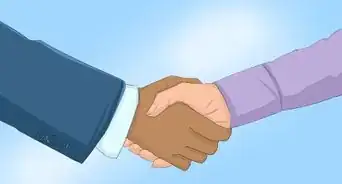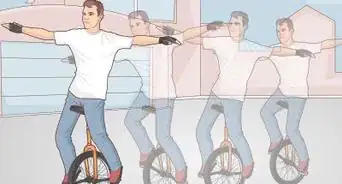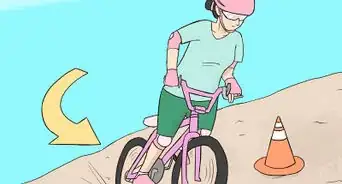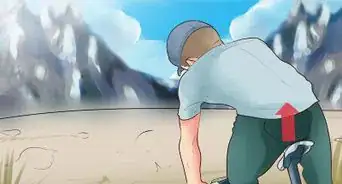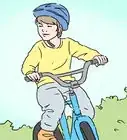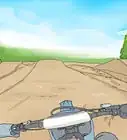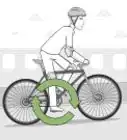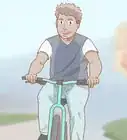This article was co-authored by Jonas Jackel. Jonas Jackel is the Owner of Huckleberry Bicycles, a bicycle retail store based in San Francisco, California. Jonas has over 20 years of experience managing bicycle retail stores and has operated Huckleberry Bicycles since 2011. Huckleberry Bicycles specializes in servicing, repairing, and custom building road, cross, gravel, touring, folding, and e-bikes. Jonas was also previously sat on the Board of Directors for Bike East Bay, a bicycle-advocacy non-profit organization based in Oakland, California.
There are 15 references cited in this article, which can be found at the bottom of the page.
This article has been viewed 89,293 times.
Cycling in traffic can feel dangerous, but it can be fairly safe if you follow the rules. Make sure to obey traffic laws while riding and take steps to keep your full attention on the road. In addition, protect yourself with gear like helmets and reflective clothing so you don't end up hurt.
Steps
Practicing Safe Driving
-
1Try riding in parking lots first.[1] If you haven't ridden much in traffic, parking lots are a good place to get some practice in. You'll be riding around cars, but at a much slower pace than you would be on the road.[2]
- Work on pedaling between cars and stopping to let traffic pass you as needed.
- Make sure you are comfortable with your bike. You should be capable of performing all the basic operations, such as accelerating, changing gears, braking, looking over your shoulder, and signaling. Adjust things like the seat height and the brakes if you need to.
-
2Start off on the easy side streets. When you decide to hit the road, stick to side streets at first. Don't try heavy traffic before you are used to traveling with cars. Gradually build up your stamina on larger roads by traveling them during quieter times. That way, you can familiarize yourself with the streets and any obstacles.
- For instance, go through neighborhood streets instead of the main thoroughfares.
Advertisement -
3
-
4Stay in the outside lane. In the United States, for instance, you generally stay in the right-hand lane at all times. That way, the cars on the road can more easily go around you, and you won't slow up the flow of traffic as much.[5]
- You can move out of the lane when you need to for things like making a left-hand turn, passing a vehicle, or going around an obstacle.
-
5Ride in a straight line. If you weave in and out, cars don't know what you're going to do next. By riding in a straight line in the center of the lane, you signal to the other drivers that your path is predictable.[6]
- Unpredictability increases your chance of a crash because you're making drivers guess where you'll go next. If they guess wrong, you could end up in an accident.
-
6Pay attention to traffic lights and signs. Just like cars, you have to stop at red lights and stop signs, as well as yield to oncoming traffic at times.[7] Following these rules is important because it gives drivers a sense of what you're going to do next.[8]
- For instance, if you come up to a 4-way stop with a car already there, the driver expects you to stop since it was there first. If you just run the stop sign, you risk getting in an accident with the car.
-
7Use hand signals when changing lanes or turning. Since you don't have a turn signal on your bike, you have to use hand signals. To turn left, put your left arm straight out to the left. To turn right, you can either put your right arm straight out or bend your left arm at the elbow with your hand pointing up.[9]
- To show you want to stop, bend your left arm at the elbow with your arm pointing down.
-
8Make eye contact with drivers before turning or changing lanes. Unless you actually make eye contact with a driver, you can't be sure they see you. If they don't see you, they could turn or change lines and collide with you. Check to ensure they are looking into your eyes while you're signaling, then you can move lanes or turn.[10]
-
9Ride in bike lanes if they're available. Some roads will have lanes specifically for bikes, and you should always use them if they are available. Otherwise, ride on the main road in one of the primary lanes. In most areas, you have the right to use the road, and cars must go around you.[11]
- Avoid riding on the sidewalks, as you can surprise drivers at intersections, leading to accidents.
Paying Attention in Traffic
-
1Keep your eyes ahead of you. You can't worry much about the traffic behind you because if you are constantly looking back, you won't see what's ahead. Accidents happen most often when bicyclists cross paths with drivers at intersections. If you keep your attention ahead of you, you're more likely to prevent an accident.[12]
-
2Avoid distractions while on your bike. If you're distracted, you may not notice a car coming in your path. Turn off the music and put your phone away while you're on your bike. That way, you can focus your whole attention on the drive.[13]
- Just like in a car, don't try to text while cycling. It could end badly!
- Similarly, don't talk on the phone, as that is a major distraction, even if you have earbuds in.
-
3Give way to pedestrians. Just like when you're in a car, pedestrians still have the right-of-way. That's true whether you're riding in a bike lane, on the street, or on the sidewalk. If you see a pedestrian trying to cross, let them go first to avoid causing issues with traffic flow.[14]
- Similarly, if you're turning right, you have to let pedestrians go by on the crosswalk before turning.[15]
-
4Watch ahead for car doors. This is particularly important if you're riding near parked cars. A door could open at any point, so be vigilant. If possible, put space between your bike and parked cars to keep you from running into one.[16]
- Aim for about 3 feet (0.91 m) of space between you and parked cars.
- Avoid weaving back and forth from the curb through parked cars, as this creates problems with the traffic behind you.
-
5Be on the lookout for road hazards at all times. If you hit a pothole, it could throw you into the path of a car, so always be looking ahead at the road. Other hazards can include things like toys, debris, and grates in the road.[17]
- Train tracks can also be hazardous for bikes.
Making Yourself and Your Gear Safe
-
1
-
2Wear a helmet that fits properly to protect your head. Make sure the helmet fits snugly but covers your head down to your ears. Push it forward so you only have 2 fingers between the front of the helmet and your eyebrows. Adjust the side straps so the bottom part of the "V" fits just below your ears. Once you click the strap under your chin, tighten it to make sure you have a secure fit.[20]
- A helmet can save you from serious head injuries if you are in an accident.
-
3Add lights to your bike. The more visible you are, the more likely drivers are to see you on the road. Put a white headlight on the front of your bike and a red light on the back, making yourself easier to see. Also, reflectors all over the bike will help increase your visibility at night.[21]
- You can find bike light kits at most big box stores and online.
-
4Wear bright clothing during the day and reflective clothing at night. Bright colors will help people see you during the day. They can also help at night, but reflective clothing is even better. Try to carry a reflective vest just for this purpose.[22]
- A vest like a construction person wears is a good option. It's bright and has reflective material.
-
5Wear comfortable clothing that won't get in the way. Make sure you are wearing shoes, pants, and tops that are comfortable and suit the bicycle. Don't wear anything too loose that could get caught in the wheels. Pick shoes without heels that have non-slip soles.
- Trying to ride a bicycle in heels will give you less control over the bike, which could result in an accident.
-
6Place your cargo in a backpack to keep it out of the way. Make sure you fasten it to your back so it doesn't shift around while you're riding. Alternatively, you can mount specially designed bike bags on your bike. These bags are more comfortable to ride with than a regular backpack.
- Avoid dangling loose bags from your handlebars or other parts of your bike since they could get caught in the wheels.
-
7Put a horn or bell on your bike. Drivers won't always be able to see you, so you need to be able to announce your presence audibly, too. With a horn or bell, you can let drivers know you're nearby so that they know to look out for you.[23]
- You can find horns and bells online or at big box stores. Make sure the one you choose is loud enough that drivers will be able to hear it in their cars.
Expert Q&A
-
QuestionHow stay safe on a busy road?
 Jonas JackelJonas Jackel is the Owner of Huckleberry Bicycles, a bicycle retail store based in San Francisco, California. Jonas has over 20 years of experience managing bicycle retail stores and has operated Huckleberry Bicycles since 2011. Huckleberry Bicycles specializes in servicing, repairing, and custom building road, cross, gravel, touring, folding, and e-bikes. Jonas was also previously sat on the Board of Directors for Bike East Bay, a bicycle-advocacy non-profit organization based in Oakland, California.
Jonas JackelJonas Jackel is the Owner of Huckleberry Bicycles, a bicycle retail store based in San Francisco, California. Jonas has over 20 years of experience managing bicycle retail stores and has operated Huckleberry Bicycles since 2011. Huckleberry Bicycles specializes in servicing, repairing, and custom building road, cross, gravel, touring, folding, and e-bikes. Jonas was also previously sat on the Board of Directors for Bike East Bay, a bicycle-advocacy non-profit organization based in Oakland, California.
Owner, Huckleberry Bicycles Be careful on wet roads. Wet metal and paint can cause you to wipe out, and oil slicks can become like black ice. Avoid hard turns, try to keep the bike as upright as possible, and give yourself more time to stop.
Be careful on wet roads. Wet metal and paint can cause you to wipe out, and oil slicks can become like black ice. Avoid hard turns, try to keep the bike as upright as possible, and give yourself more time to stop. -
QuestionHow can I cycle on the road safely?
 Jonas JackelJonas Jackel is the Owner of Huckleberry Bicycles, a bicycle retail store based in San Francisco, California. Jonas has over 20 years of experience managing bicycle retail stores and has operated Huckleberry Bicycles since 2011. Huckleberry Bicycles specializes in servicing, repairing, and custom building road, cross, gravel, touring, folding, and e-bikes. Jonas was also previously sat on the Board of Directors for Bike East Bay, a bicycle-advocacy non-profit organization based in Oakland, California.
Jonas JackelJonas Jackel is the Owner of Huckleberry Bicycles, a bicycle retail store based in San Francisco, California. Jonas has over 20 years of experience managing bicycle retail stores and has operated Huckleberry Bicycles since 2011. Huckleberry Bicycles specializes in servicing, repairing, and custom building road, cross, gravel, touring, folding, and e-bikes. Jonas was also previously sat on the Board of Directors for Bike East Bay, a bicycle-advocacy non-profit organization based in Oakland, California.
Owner, Huckleberry Bicycles Be sure you follow all of the rules of the road like you were driving a car so you don't get into an accident.
Be sure you follow all of the rules of the road like you were driving a car so you don't get into an accident. -
QuestionDo I have to move as fast as the cars?
 Community AnswerNo. That's pretty much impossible, unless you find yourself on a very steep incline. It's also incredibly dangerous. Though you have to follow many of the same traffic laws as the cars, remember that car drivers have to pay attention to you and give you lots of space as a cyclist.
Community AnswerNo. That's pretty much impossible, unless you find yourself on a very steep incline. It's also incredibly dangerous. Though you have to follow many of the same traffic laws as the cars, remember that car drivers have to pay attention to you and give you lots of space as a cyclist.
Warnings
- Don't stop to the right of a vehicle turning right. If you are in front of the rear axle, it may push you into the curb.⧼thumbs_response⧽
- Stay out of drivers' blind spots, which is generally on the side opposite the driver toward the back of the car.⧼thumbs_response⧽
References
- ↑ Jonas Jackel. Owner, Huckleberry Bicycles. Expert Interview. 18 February 2020.
- ↑ https://www.bicycling.com/rides/a20023779/your-definitive-guide-to-riding-your-bike-in-traffic/
- ↑ Jonas Jackel. Owner, Huckleberry Bicycles. Expert Interview. 18 February 2020.
- ↑ https://www.nhtsa.gov/road-safety/bicycle-safety
- ↑ https://www.penndot.gov/TravelInPA/RideaBike/Pages/Bicycle-Safety-and-Pennsylvania-Laws.aspx
- ↑ https://www1.nyc.gov/html/dot/html/bicyclists/biketips.shtml
- ↑ Jonas Jackel. Owner, Huckleberry Bicycles. Expert Interview. 18 February 2020.
- ↑ https://www.nhtsa.gov/road-safety/bicycle-safety
- ↑ https://www.nhtsa.gov/sites/nhtsa.dot.gov/files/8009-handsignals.pdf
- ↑ https://www.bicycling.com/rides/a20023779/your-definitive-guide-to-riding-your-bike-in-traffic/
- ↑ https://www1.nyc.gov/html/dot/html/bicyclists/biketips.shtml
- ↑ https://www.bicycling.com/rides/a20023779/your-definitive-guide-to-riding-your-bike-in-traffic/
- ↑ https://www.nhtsa.gov/road-safety/bicycle-safety
- ↑ https://www.penndot.gov/TravelInPA/RideaBike/Pages/Bicycle-Safety-and-Pennsylvania-Laws.aspx
- ↑ https://ddot.dc.gov/page/ddot-bicycle-and-pedestrian-safety
- ↑ https://www1.nyc.gov/html/dot/html/bicyclists/biketips.shtml
- ↑ https://www.nhtsa.gov/road-safety/bicycle-safety
- ↑ Jonas Jackel. Owner, Huckleberry Bicycles. Expert Interview. 18 February 2020.
- ↑ https://www.nhtsa.gov/road-safety/bicycle-safety
- ↑ https://icsw.nhtsa.gov/people/injury/pedbimot/bike/kidsandbikesafetyweb/
- ↑ https://www1.nyc.gov/html/dot/html/bicyclists/biketips.shtml
- ↑ https://www1.nyc.gov/html/dot/html/bicyclists/biketips.shtml
- ↑ https://www1.nyc.gov/html/dot/html/bicyclists/biketips.shtml



